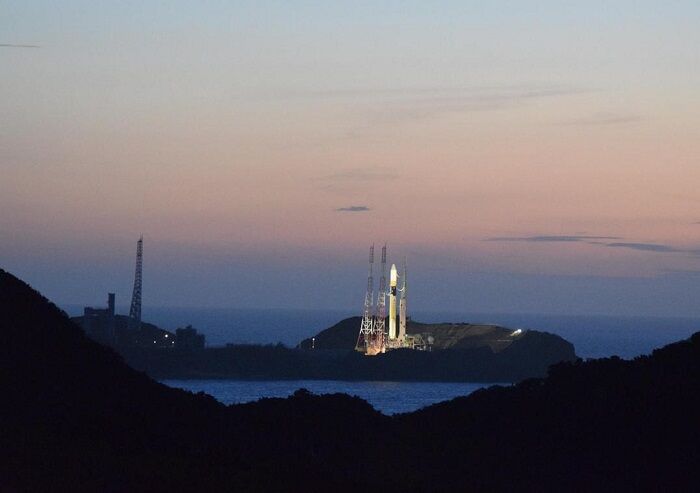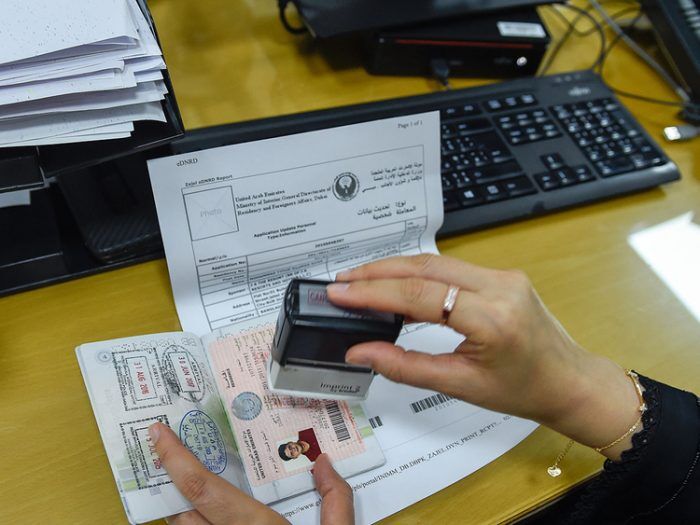Abu Dhabi/ Tanegashima: UAE’s ever greatest space mission – its Mars probe called the Hope Probe was successfully launched from the launch pad at Tanegashima island of Japan at 1:58 AM (UAE time). While the successful launch was made after two deferments due to bad weather at the island, it was UAE’s biggest dream and prayer and hope.
The Arab world’s first homegrown space mission launched right on time sending the Hope probe soaring towards Earth’s outer orbit. In the coming hours it will separate from its H-IIA rocket and begin the 200-day journey towards the Red Planet. Approval came after weeks of heavy rain and postponements on July 15 and 17.
The Hope probe has successfully made contact with teams on the ground. It has also extended its solar array which is crucial to powering itself in the next two years. Officials said the mission has gone smoothly on Monday after two blast-offs were scrubbed due to bad weather last week. The launch from Japan at 1.58am UAE time was a landmark beginning in what will be a risky 200-day mission for the spacecraft, which will endure extreme heat and radiation to reach the Red Planet.
The UAE Mars Mission announced the first signal reception from the Hope Probe in their official twitter:
The Mars Mission twitter also included the launch video which said that the first Arabic count down from Japan has been rushed into the golden history:
More approvals have been received at the mission control centre in the Mohammed bin Rashid Space Centre in Dubai. The team is communicating with those in Japan and their partners at the University of Colorado Boulder in the US. Omran Al Sharaf, the project manager of the mission, has given a green light for lift-off.
The launch operator Mitsubishi Heavy Industries also shared their proud moments in Tweets. MHI was the one who built the 53m H-II A rocket that carried the Hope Probe to Mars and the launch process was also assisted by them.
Meanwhile, the people and the government at UAE is in a rejoicing mood after the successful launch of the mission. Dr. Ahmad Al Falasi said, “This is a big message for the region”.
Some facts about the Mission:
Hope has two solar panels that provide 600 watts of energy to charge its onboard battery. That is about the same as 20 laptops. The probe does not have a back up battery and relies solely on these arrays for electrical power.
For the first 30 days after lift-off, engineers at the control room in Dubai’s Mohammed bin Rashid Space Centre will work 24-hour shifts to communicate with the spacecraft, monitoring its health and status.
The probe also has fuel to power its thrusters to reverse it so that a safe entering to the Mars orbit would be attained. Once it is in the destination, it has enough fuel to complete its designed duration of operation, which is one year equivalent in Mars – that is 687 days in earth.
Hope will not return to Earth after it has completed the mission and will power down after one Martian year. It would take about 50 years to decay in orbit before entering Mars’ atmosphere and falling to the ground.
The Probe has three equipment with it. An imager, which photographs in optical and ultraviolet rays. There are two spectrometers too on board which can split light. These are all used to acquire precise data on Martian weather.
Read this to know more about the pre launch information of the Hope Probe and the mission.





![The Top & Most Popular Seafood Bucket Restaurants in Dubai for you [Never Miss]](https://cdn-bcaic.nitrocdn.com/xbqiknhylajlKDYOliCLZeRuxPCWDGHz/assets/images/optimized/rev-b04d989/uae24x7.com/wp-content/uploads/2020/09/8-seafood-in-a-bucket-scaled-e1600739237403.jpg)